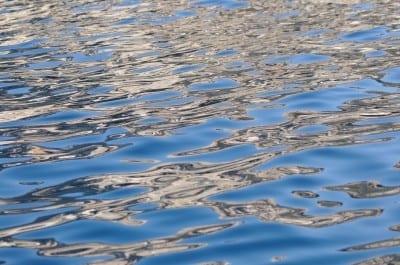Fueling nuclear reactors with uranium harvested from the ocean could soon become more feasible thanks to a material developed by a team led by the Department of Energy’s Oak Ridge National Laboratory (ORNL). The combination of ORNL’s high-capacity reusable adsorbents and a Florida company’s high-surface-area polyethylene fibers creates a material that can rapidly, selectively, and economically extract valuable and precious dissolved metals from water.
The material, HiCap (from high-capacity), outperforms today’s adsorbents, which perform surface retention of solid or gas molecules, atoms or ions. It also effectively removes toxic metals from water, according to results verified by researchers at Pacific Northwest National Laboratory.
 “We have shown that our adsorbents can extract five to seven times more uranium at uptake rates seven times faster than the world’s best adsorbents,” said Chris Janke, one of the inventors and a member of ORNL’s Materials Science and Technology Division.
“We have shown that our adsorbents can extract five to seven times more uranium at uptake rates seven times faster than the world’s best adsorbents,” said Chris Janke, one of the inventors and a member of ORNL’s Materials Science and Technology Division.
HiCap narrows the fiscal gap between what exists today and what is needed to economically extract some of the ocean’s estimated 4.5 billion tons of uranium. Although dissolved uranium exists in concentrations of just 3.2 parts per billion, the sheer volume means there would be enough to fuel the world’s nuclear reactors for centuries.
The adsorbents are made from small diameter, round or non-round fibers with high surface areas and excellent mechanical properties. By tailoring the diameter and shape of the fibers, researchers can significantly increase surface area and adsorption capacity. This and ORNL’s patent pending technology to manufacture the adsorbent fibers results in a material able to selectively recover metals more quickly and with increased adsorption capacity, thereby increasing efficiency.
“Our HiCap adsorbents are made by subjecting high-surface area polyethylene fibers to ionizing radiation, then reacting these pre-irradiated fibers with chemical compounds that have a high affinity for selected metals,” Janke told.
After the processing, scientists can place the adsorbents in water containing the targeted material, which is quickly and preferentially trapped. Scientists then remove the adsorbents from the water and the metals are readily extracted using a simple acid elution method. The adsorbent can then be regenerated and reused after being conditioned with potassium hydroxide.
In a direct comparison to the current state-of-the-art adsorbent, the novel material provides significantly higher uranium adsorption capacity, faster uptake and higher selectivity, according to the laboratory. Specifically, the adsorption capacity is seven times higher in spiked solutions containing 6 parts per million of uranium at 20°C. In seawater, the capacity of 3.94 grams of uranium per kilogram of adsorbent was more than five times higher than the world’s best at 0.74 grams of uranium per kilogram of adsorbent. The numbers for selectivity showed to be seven times higher. “These results clearly demonstrate that higher surface area fibers translate to higher capacity,” concluded Janke.
Image: Federico Stevanin / FreeDigitalPhotos.net

















